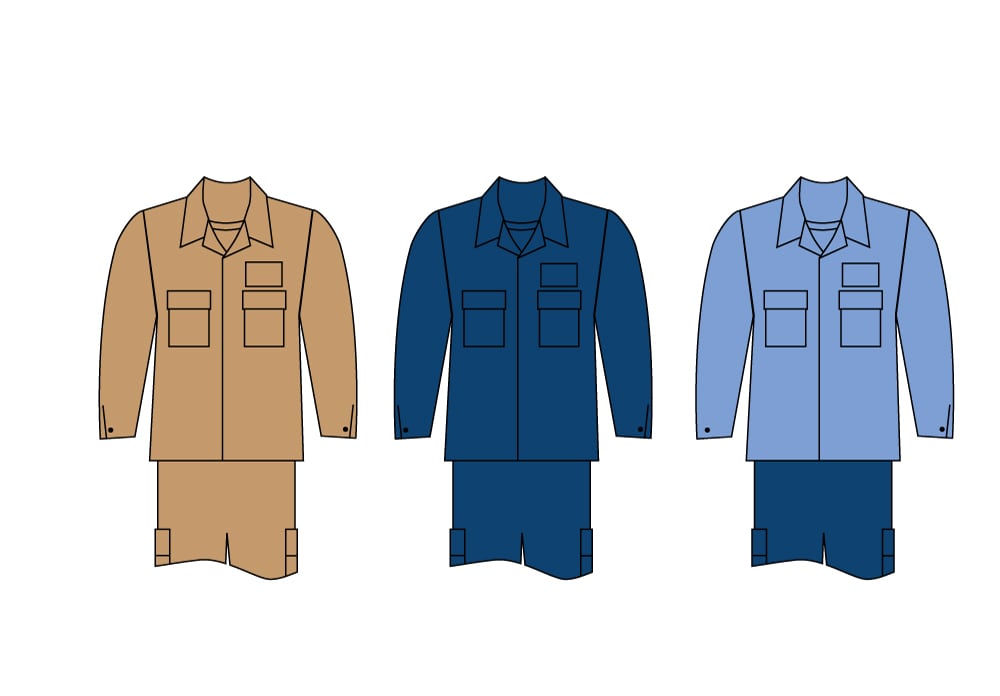NAVAL STATION NORFOLK, Va. — For anyone who has been in the Navy for a decade or more, the wear tests starting June 1 of the new at-sea uniforms could be a flash from their own past.
Hot on the heels of finalizing a four-year effort to put fire-retardant coveralls on every fleet sailor, Fleet Forces Command will oversee testing of a new fire-retardant uniform that would be more practical for the average sailor at sea or in operational units.
While they’re at it, Navy officials are also trying out color schemes that are a throw-back to the wash khakis and dungarees era, which ended in January 2010 when the NWU Type I’s became mandatory.
The tests will run until September.
With all the sea bag upheaval in the past 15 years or so, this isn’t planned as a new uniform — at least not yet.
That’s because officials are saying this outfit is planned to be command-issued “organizational clothing, as with the coveralls and flight suits.”
But that could change down the line, sources familiar with the big picture say, when this “Maritime Two-Piece Fire Retardant Varient” uniform becomes standard at-sea issue.
“This was sailor driven and came out of focus groups in Norfolk and San Diego, encompassing roughly 250 sailors from all communities,” Capt. Mark Runstrom, director of Fleet Supply Operations and Services at U.S. Fleet Forces Command, told Navy Times when the tests were announced in late January.
Runstrom said that 84 percent of sailors in those groups said they wanted the Navy to develop two-piece fire-retardant uniform.
The idea behind the changes is to produce a uniform that is available to be worn by sailors in operational commands at sea, in port and even while commuting off base to reduce the number of daily clothing changes.
The focus groups found that sailors prefer to have working duds they can commute to work in so they don’t have to change clothes at the command two times per day.
To meet those requests, officials say the wear test uniforms will be allowed for wear to and from work, utilizing the same wear rules currently in place for both types of the NWU.
RELATED

E-7 and above will test khaki versions of the uniform, while E-6 and below will test two variants — one that features a dark blue blouse and dark blue trousers and another that’s a dead ringer for the old light blue dungaree shirt and dark blue pants combination. The only departure from the old uniforms — and all the test uniforms — is that the uniforms will be untucked, as is the case with the NWU.
Pants, too, will be worn old style — unbloused. Both the shirts and the pant legs, however, can be tucked or bloused quickly for general quarters.
Each sailor testing the uniforms is being issued four shirts and four trousers in the color scheme they are assigned.
Though appearing the same from a distance, there are differences in fabrics as well as in the design features, such as differently-placed pockets and other reinforcements.
Additionally, these sailors will also test four different colors of flame resistant, moisture-wicking undershirts.
And there won’t be any new boots to go along with the changes. Instead, sailors will wear what was once an optional piece of footware, a low-cut molder boot reminiscent of the old boondockers.
The only real difference between the old boondockers and molders boots is the latter features no laces and is held on the foot with elastic, making them easier to put on and remove.
That’s a helpful feature at sea or when general quarters sounds in the middle of the night and sailors need to scramble to their stations for any reason.
A wide rigger’s belt will be worn with the uniform, and there won’t be any changes to existing ball caps.
For now, pin-on rank, warfare insignia and name tags will be worn with the prototypes.
However, wear test feedback will help decide whether embroidered name tags and pin on devices would be preferable instead.
Each command will have a coordinator who will collect feedback from sailors testing the uniforms.
Officials want to know everything from how the uniforms fits to its day-to-day comfort and durability, as well as the functionality of the various types of pockets.
Fleet Forces Command, who is overseeing the tests, will also be collecting feedback through its website from non-testers to gather impressions and suggestions.
Navy Times would also like feedback from sailors about these test uniforms.
Which color schemes do you prefer? What features do you want most?
Don’t hold back! Send us the good, the bad and the ugly!
Mark D. Faram is a former reporter for Navy Times. He was a senior writer covering personnel, cultural and historical issues. A nine-year active duty Navy veteran, Faram served from 1978 to 1987 as a Navy Diver and photographer.




